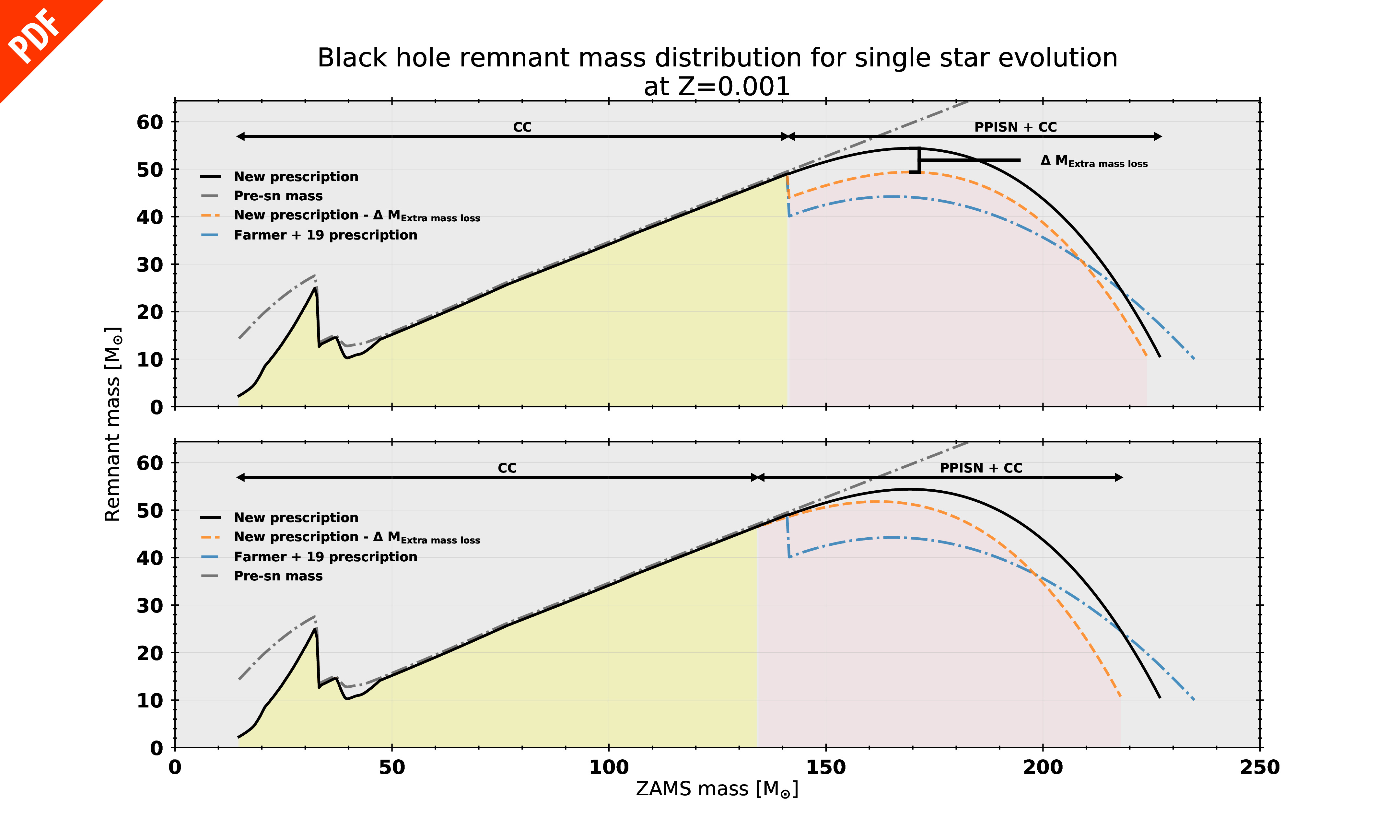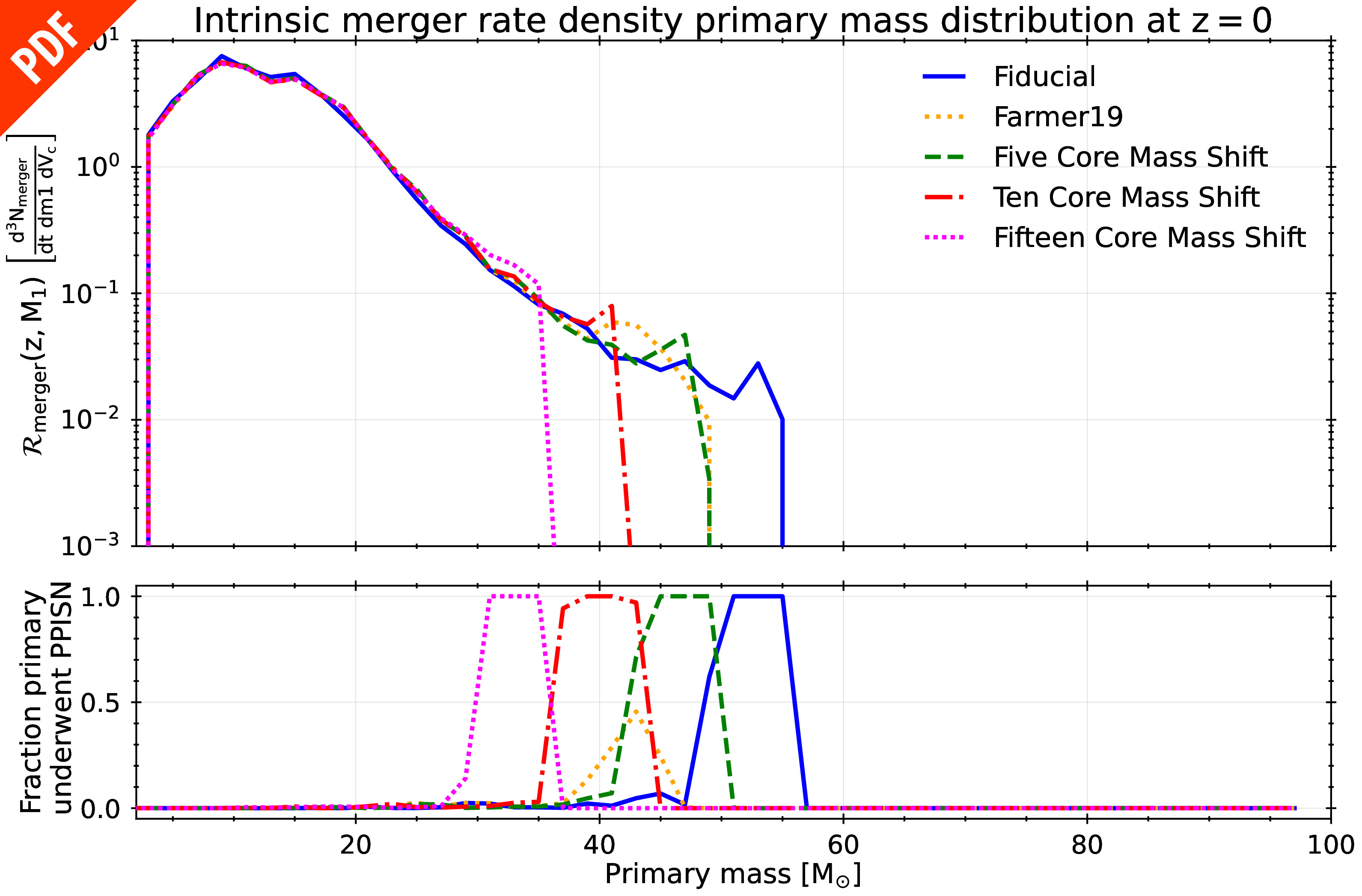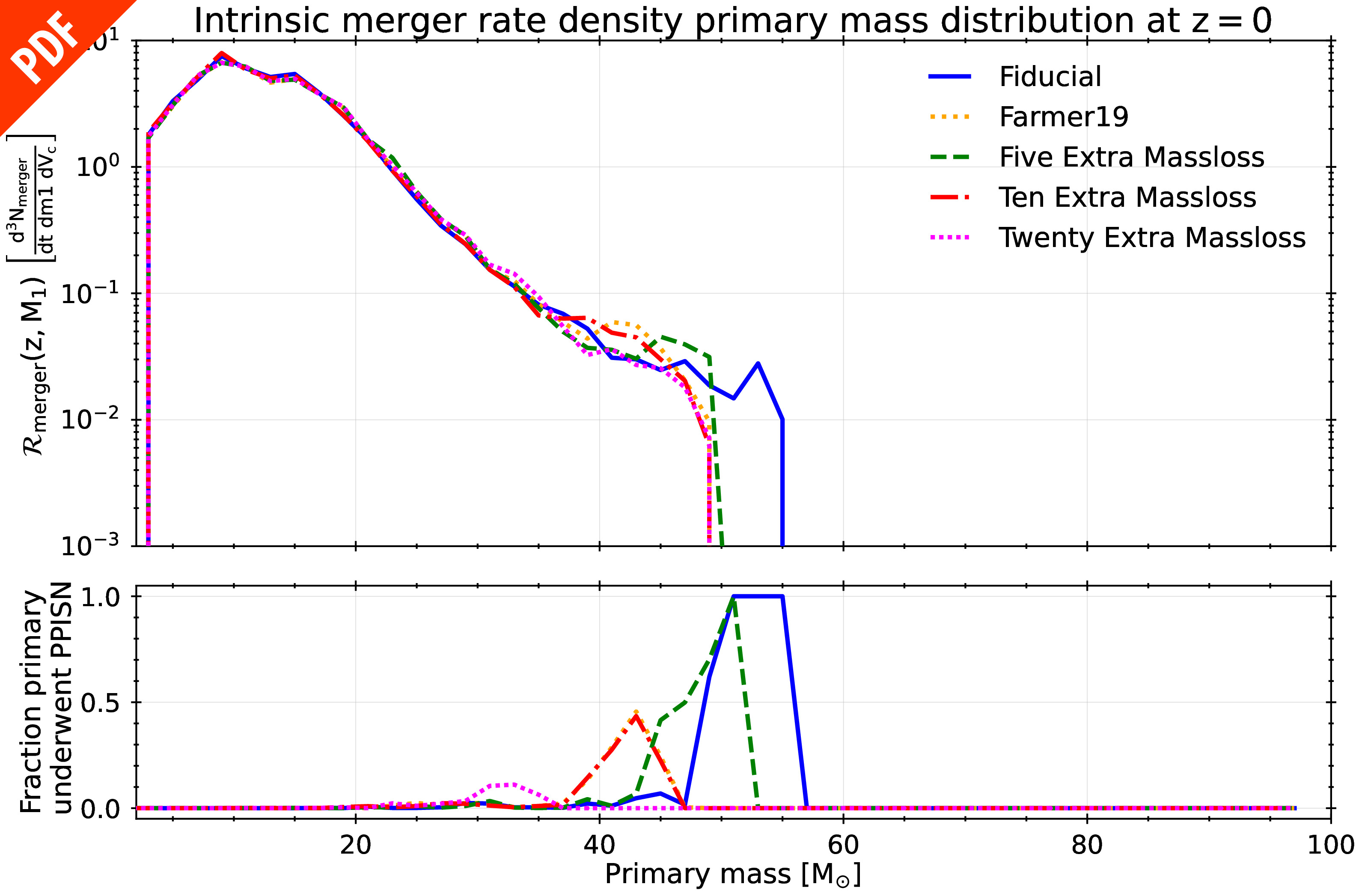Observations
Recent observations of the LIGO VIRGO KAGRA gravitaional wave observatories start to uncover interesting features and unexpected observations.
Peak at high mass
An interesting feature that has been uncovered in the GTWC3a data release, and reconfirmed in the GWTC3b data release is a peak of black hole masses in the primary mass distribution. The distribution is best fit by a broken power-law + peak model, where the peak is located at ~35 solar masses. The origin of this peak is as of yet not determined.
Pulsational pair-instability supernovae
A possible cause for a peak in the primary mass distribution of merging black holes is the pulsational pair-instability supernova (PPISN) pile-up. Overall the PPISN mechanism is well understood but there are physical processed that can change the predicted mass loss due to pulses. Generally the peak caused by PPISNe is predicted to be at a higher mass and we aim to study whether variations on the PPISNe induced mass loss can match the observed peak location.




